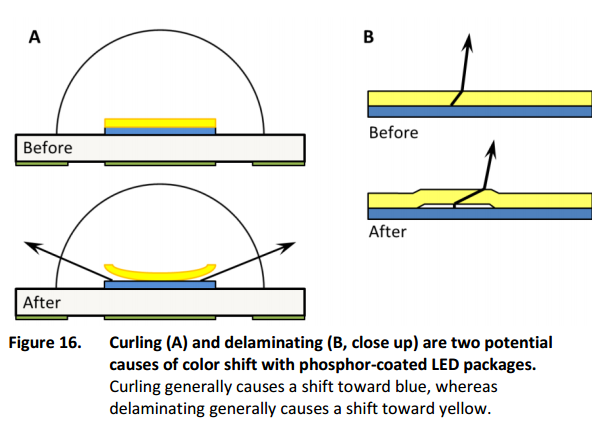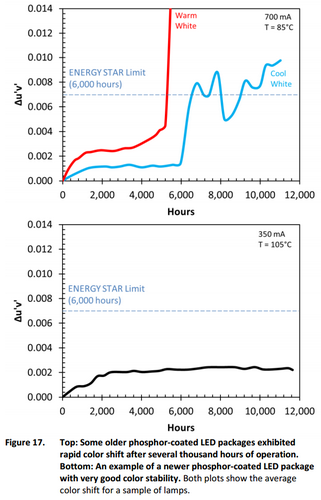The U.S. Department of Energy (DOE) has published a new report, Color Maintenance of LEDs in Laboratory and Field Applications. Although concern for parametric failure of LED lighting products has largely been focused on lumen maintenance, color shift is a cause of early failure for some products, especially in applications where visual appearance is critical.
 |
|
DOE report depicts color shifts caused by phosphor-coated LED packages. (LEDinside/DOE) |
The report discusses field data from DOE's GATEWAY program showing that many LED lamps installed in museums have changed color beyond a reasonable tolerance well before their rated lifetimes were reached, and laboratory data from DOE's CALiPER program indicating that many early LED products shifted beyond acceptable tolerances in as short a span of time as a few thousand hours. But it also notes that testing of the L Prize®-winning lamp has shown that commercially available LED products can have exemplary color stability unmatched by traditional light sources.
 |
|
DOE compares newer phosphor-coated LED package color shifts against older phosphor-coated LEDs. (LEDinside/DOE) |
The report also discusses the metrics used for communicating color shift, and provides guidance for end users on how to monitor chromaticity and what to look for in manufacturer warranties. Also covered are the physical changes that have been shown to lead to color shift in some types of LED packages. As with lamps and luminaires, the data presented for LED packages shows that a wide variety of products are available. In order for specifiers and consumers to make educated choices, more detailed and standardized information is necessary.
Download a PDF copy of the report.













